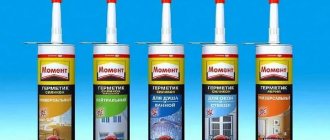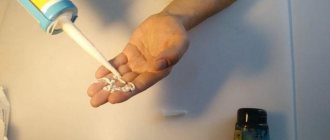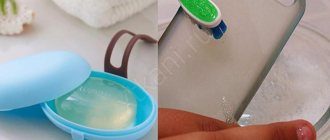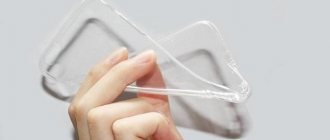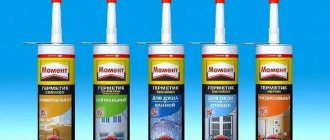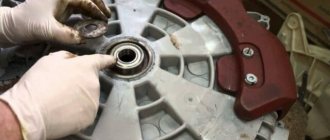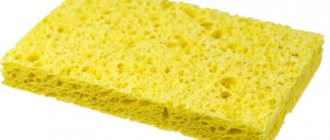Ensuring a seal in the bathroom means preventing moisture from entering the floor, wall structure or surrounding objects. For these purposes, a special material is used - sealant. It fills joints, junctions, all kinds of cracks and holes.
Sometimes it becomes necessary to remove outdated material. A reasonable question arises - how to clean the sealant from the bathtub.
Types of sealants
The sealant is a paste-like mass. It is based on a family of polymers. They have a colorless, white or colored tint. When hardened, they form a dense rubber-like substance with varying degrees of rigidity, from being crushed by hand to hard plastic.
There are three types of sealants used in the bathroom:
- Silicone. The substance is based on silicone rubber. For household purposes, one-component compositions are used. Pure or low content of organic additives are not colored. Water resistant. Subdivided:
- Acid. It has a characteristic odor of acetic acid.
- Neutral. Almost odorless. More expensive than acid analogues.
- Acrylic. Based on acrylic copolymers. Has a white color. Colorless compositions or with the introduction of dyes are available. Destroyed by water. Paintable.
- Siliconized. They are a composition of acrylic and silicone components. Combined the advantages of both sealants:
- adhesive properties to most building and finishing materials;
- formation of a dense, continuous sealed mass;
- moisture resistance;
- colorability;
- harmless to humans.
- Polyurethane. Consist of polyurethane elastomers (one-component polyurethane). One well-known example is polyurethane foam.
Reasons for removing sealant
The need to update or remove old sealant from the bathtub arises for a number of objective reasons:
- The sealant has aged. The structure has changed and cracks have appeared. The surface of the protective coating has darkened.
- Traces of biological damage appeared. The surface began to become covered with mold. The fungus is visible - black spots have appeared. Bacteria have settled in - a greenish-yellow coating.
- Carelessness. During any sealing operations, part of the sealant got into the wrong place - a drop was accidentally dropped onto the surface.
- Installation errors. Upon completion of installation, repair or assembly work, shortcomings in applying the sealant were revealed - non-compliance with application technology, incomplete filling of the seam, etc.
Advantages and disadvantages
For convenient use, acrylic sealant is produced in compact tubes.
The product is easy to hold while working due to its light weight. Another form of production of compositions is tubes and cartridges, which must be applied using a mounting gun. Professional sealants are used for large-scale work, and small tubes are used for minor home repairs. Some mixtures are supplied in plastic buckets that hold several kilograms. Such products are applied with a spatula, treating large surfaces and bases. The process of vulcanization or polymerization of compositions occurs as a result of moisture evaporation. Advantages of acrylic sealants:
- Ecological cleanliness. The absence of solvents in the compositions eliminates the content of dangerous toxins, so acrylic mixtures are best suited for interior work. During processing, the substances do not release the characteristic pungent odor and volatile substances into the atmosphere.
- High adhesion to various materials is one of the main properties of acrylic sealant. Universal products interact well with metal, wood, plastic, tile, ceramic surfaces with a smooth base or porous structure.
- Good vapor permeability. After applying the acrylic product, the surface becomes solid, but does not create a “greenhouse” effect. It is allowed to use acrylic sealant to seal gaps in window frames, door structures made of wood, plastic or metal.
- Easy to apply. Acrylic sealant is supplied in tubes, cartridges or buckets. It can be applied using a gun or spatula. The remaining mixture can be easily removed with a clean rag, and if the product has hardened, the excess can be cut off with a knife. The main rule of application is compliance with the temperature regime.
- Resistance to ultraviolet rays and high fire safety. According to the fire resistance class, acrylic compositions are classified as non-flammable mixtures due to the absence of solvents in them. When exposed to sunlight, sealants do not fade or crack.
After the acrylic layer has dried, the surface can be painted. The mixtures are presented in a wide range of colors. They are characterized by high aesthetic appeal and durability of the coating. Another advantage of acrylic-based sealants is their affordability. The disadvantages of the products include low resistance to moisture.
Mechanical method
One of the first steps to cleaning silicone bathtub caulk is to visually inspect the condition of the protective coating. This is necessary to select a tool to remove old material. It happens that the strip spontaneously moves away from the product, all that remains is to pry it with a flat object and remove the sealant from the bathtub.
The mechanical cleaning method involves the use of hard metal and plastic objects:
- kitchen metal (ceramic) knife with a sharp tip;
- stationery knife with a retractable blade;
- flat (slotted) screwdriver;
- scissors;
- plastic student triangle;
- plastic disposable knife and other items.
The mechanical cleaning method is effective on enameled bathtubs (due to the hardness of the coating) and tiles.
Sequence of work:
- The bulk of the old substance is cut off with a knife. The plane of the blade must be positioned along the surface of the bathtub or tile.
- Use a brush or toothbrush to remove small remaining sealant.
- Cleaning powder with solid inclusions is applied.
- Using the hard side of a dishwashing sponge, wipe off any remaining adhesive.
- Wash with warm water and washing powder.
ADVICE. Instead of cleaning powder, you can successfully use baking soda - crystals of the substance will do an excellent job of removing sealant residues on the surface. Another option is rock table salt. Before use, both powders are slightly moistened.
Unfortunately, it is difficult to remove silicone sealant from a bathtub made of acrylic. Unlike enamel coating, acrylic has less hardness and surface strength. The substance itself adds complexity - over time, the sealant, especially acrylic, penetrates into the structure of the material.
To clean silicone in the bathroom or completely remove the acrylic protective coating, a combined method is used - a combination of chemicals and partial mechanical action.
Adviсe
To remove silicone and acrylic, follow these tips:
- Heating. This method will quickly get rid of stains on any surface. To do this, the contaminated area is moistened with vinegar, then a paper sheet is applied, which is ironed with a hot iron.
- Freezing. To implement this method, the item is placed in the freezer, the time for complete freezing is waited, and the stain is removed with a sharp object.
- Minor stains can be wiped off with hydrogen peroxide.
- No pollution allowed. The work must be done with gloves and work clothes. Apply masking tape near the area to be treated.
We recommend watching the video instructions:
Chemical method for removing sealant from a bathtub
The main part of the sealing substance, taking precautions (not to damage the surface of the bath), is removed mechanically. Next, special chemical compounds for dissolving the sealant come to the rescue.
- White Spirit. The liquid is applied with a cloth to the remaining sealant. Leave for 1-5 minutes. The sealant softens, turns into a jelly-like mass, and is cleaned off with plastic, wood or a thick piece of fabric (tarpaulin).
ADVICE. White spirit is a highly volatile substance and evaporates quickly. It is advisable to cover small areas, up to 0.5–1.0 meters.
- Special equipment. The industry produces materials for dissolving adhesives in the form of pastes, gels, liquids or aerosols. To clean silicone sealant in the bathroom, first wipe the surface with a damp cloth - this will remove the invisible soap film. Next, according to the instructions, the substance is applied.
NOTE. Before use, you must read the instructions. It is quite possible that some special equipment can only be used for one type of material, while others may be damaged.
| Name | Volume | Application | Price, rub |
| Sealant remover "HG" | 100ml | Removing old sealant from tiles, plastic, stainless steel, natural and artificial stone | 650~750 |
| Silicone cleanser SOUDAL | 100ml | Removing hardened silicone and silicone-based sealants. Suitable for acrylic and butyl compounds | 220~290 |
| Removing silicone and wax Ligui Moly | 300ml | Cleaning old silicone and wax. Supplied in an aerosol can. Used in car repair shops | 1000~1200 |
| Removal of silicone, fats SILICON- & WACHSENTFERNER WASSERLOSLICH | 5l | Alcohol-based anti-silicone compound. Removes silicone and its derivatives, bitumen stains, fats and oils. Used in the automotive industry | 2500~2900 |
| Silicone removal, professional series TYTAN | 80ml | A paste-like substance containing an organic-based solvent. Removes fresh and cured silicone sealant from tiles, glass, plastic, concrete, wood | 270~350 |
| Dow Corning OS-2 Silicone Remover | 283g | Cleaning from silicone adhesives (labels). Available in spray form | 1500~1700 |
| Silicone remover NOVOL PLUS 780 | 1000ml | Removing silicone, oils, fats from metal, plastic, glass, paint and varnish coatings | 300~370 |
| Body 770 Silicone Removal | 1000ml | Degreaser of surfaces before painting. Removes silicone residues, traces of oils, resins. | 390~490 |
| Dancol cleanser | 400ml | It is used to clean and degrease the surface from silicones, wax compounds, and oil group. Spray | 220~270 |
| Special product KUDO PR No. 20 | 650ml | Removes traces of fresh silicone, polyurethane sealant, rubber from the surface of PVC-based products. Aerosol | 145~200 |
Home Remedies
At home, removing stains from sealant is much more difficult, but it is possible. There are several cleaning methods. Acid-based construction products can be removed from clothing using concentrated acetic acid 70%. To do this, you need to soak the stain for 30 minutes, then remove the silicone with a rag or brush. The disadvantage of this method is the pungent odor that does not disappear after a single wash.
Alcohol or vodka denatures the silicone; leaving a rag soaked in alcohol for an hour will allow you to easily remove silicone from the fabric using light mechanical pressure on the stain.
If the fabric stretches well, then you can clean it without foreign agents. Stretching the area with sealant, prying up the loose pieces of film. Another effective method is freezing. Many sealants do not tolerate low temperatures well and, after freezing, crumble and are easily peeled off the surface of the material.
To clean delicate fabrics, it is better to use baby soap. Wash the area with silicone thoroughly and leave for half an hour, then wash off the stain from the clothes. This procedure will have to be carried out several times, but you don’t have to worry that aggressive products will damage your favorite jeans.
Features of removing sealant from various bath surfaces
Sealing compounds in the bathroom are used not only to insulate the font itself. The following are subject to the procedure:
- wash basin;
- toilet;
- bidet;
- shower cabin;
- the seams between the tiles are coated;
- mirrors are attached.
The methods for removing the insulating composition are no different from the methods for washing silicone sealant from the bathtub. The procedure must begin by examining the surface to be cleaned and the material from which it is made. Based on the analysis, the most optimal option is selected.
(Visited 981 times, 981 visits today)
Share

